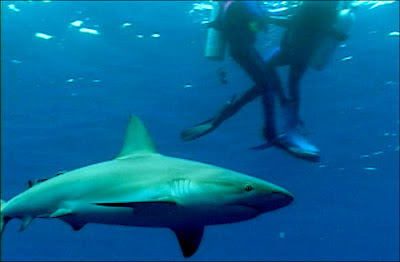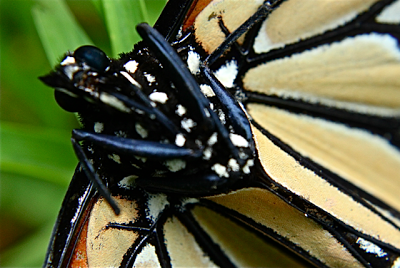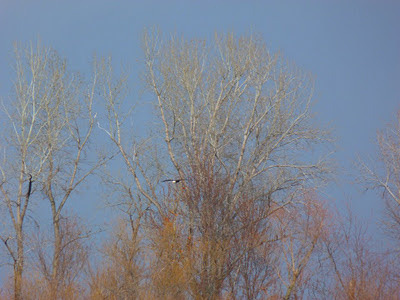Gordon Grice's Blog, page 51
July 3, 2012
Guinness Certifies Biggest Captive Crocodile

The Guinness Book has certified this record:
Largest crocodile in captivity: "The largest crocodile in captivity is Lolong, a saltwater crocodile (Crocodylus porosus), who measured 6.17 m (20.24 ft) in Agusan del Sur Province of Mindanao, Philippines. He was measured by experienced handlers in his custom built enclosure at Bunawan Eco-Park and Research Centre, Philippines. Lolong's weight was also measured at a nearby truck weigh-bridge and verified as approximately 1075 kg (2370 lbs).
The capture of the crocodile came after a 2 year effort to remove the animal thought responsible for a young girl's death at Agusan Marsh in early March 2009, and later the disappearance of a fisherman close to Bunawan Village."
We'll soon be running an in-depth piece on giant crocs, present and prehistoric, by Hodari Nundu.
Thanks to Dee for the news tip.
Published on July 03, 2012 00:36
July 2, 2012
Creepy Insects
Insect illustrations taken from antique textbooks and dictionaries:
1. American cockroach
Not actually native to the Americas, these big roaches may have arrived on slave ships.
2. Crab louse (pubic louse)
Pubic lice pass between people during sexual contact and occasionally spread to infest the eyelids, lashes, and brows. An infestation with pubic lice is called Phthiriasis or, informally, crabs.
3. Death's-head moth
"Moths are the ghosts of the insect world. It may be the manner in which they flutter in unheralded out of the night that terrifies us. They seem to tap against our lighted windows as though the outer darkness had a message for us. And their persistence helps to terrify. But they are most terrifying of all if one suddenly sees their eyes blazing crimson as they catch the light. "--Robert Lynd
4. Jerusalem cricket (potato bug)
See this earlier post about Jerusalem crickets.
5. Toe-biter (giant water bug)
These bugs use their venom to paralyze prey and liquefy its innards, which they then drink. I once measured a three-inch giant water bug, and specimens exceeding four inches are on record. The largest can take fish, frogs, and other sizable prey. They usually expend their venom on people only when they are handled. The result, usually, is a painful but not serious bite
6. Bed bug
See this earlier post about bed bugs.
7. Predacious diving beetle with its larva (the larvae are called water tigers)
"Everything was astir with life in that scummy little corner. There was frog spawn adrift, tremulous with tadpoles just bursting their gelatinous envelopes; there were little pond snails creeping out into life, and under the green skin of the rush stems the larvae of a big Water Beetle were struggling out of their egg cases. I doubt if the reader knows the larva of the beetle called (I know not why) Dytiscus. It is a jointed, queer-looking thing, very muscular and sudden in its movements, and given to swimming head downward with its tail out of water; the length of a man's top thumb joint it is, and more, and it has two sharp jaws that meet in front of its head--tubular jaws with sharp points--through which its habit is to suck its victim's blood."--H. G. Wells
8. Death-watch beetle
“The church was very cold, with a scent of candle-wax and ancient dust. It was a large church, much too large for its congregation, and ruinous and more than half empty. The three narrow islands of pews stretched barely half-way down the nave, and beyond them were great wastes of bare stone floor in which a few worn inscriptions marked the sites of ancient graves. The roof over the chancel was sagging visibly; beside the Church Expenses box two fragments of riddled beam explained mutely that this was due to that mortal foe of Christendom, the death-watch beetle.”--George Orwell
9. Tsetse fly
The vector of African sleeping sickness. Victims begin with a scabbed sore at the site of the tsetse bite, then develop fever, headache, and malaise. Eventually, they progress to personality changes, lethargy, coma, and, if untreated, death. Fifteen to twenty thousand people a year come down with this illness. An outbreak occurred in the eastern African nation of Uganda from 1901 to 1905, killing 200 thousand people. One theory holds that the disease was accidentally imported a few years earlier by the Stanley expedition (of Stanley and Livingstone fame), which traced the course of the Congo River from the west.
1. American cockroach
Not actually native to the Americas, these big roaches may have arrived on slave ships.
2. Crab louse (pubic louse)
Pubic lice pass between people during sexual contact and occasionally spread to infest the eyelids, lashes, and brows. An infestation with pubic lice is called Phthiriasis or, informally, crabs.
3. Death's-head moth
"Moths are the ghosts of the insect world. It may be the manner in which they flutter in unheralded out of the night that terrifies us. They seem to tap against our lighted windows as though the outer darkness had a message for us. And their persistence helps to terrify. But they are most terrifying of all if one suddenly sees their eyes blazing crimson as they catch the light. "--Robert Lynd
4. Jerusalem cricket (potato bug)
See this earlier post about Jerusalem crickets.
5. Toe-biter (giant water bug)
These bugs use their venom to paralyze prey and liquefy its innards, which they then drink. I once measured a three-inch giant water bug, and specimens exceeding four inches are on record. The largest can take fish, frogs, and other sizable prey. They usually expend their venom on people only when they are handled. The result, usually, is a painful but not serious bite
6. Bed bug
See this earlier post about bed bugs.
7. Predacious diving beetle with its larva (the larvae are called water tigers)
"Everything was astir with life in that scummy little corner. There was frog spawn adrift, tremulous with tadpoles just bursting their gelatinous envelopes; there were little pond snails creeping out into life, and under the green skin of the rush stems the larvae of a big Water Beetle were struggling out of their egg cases. I doubt if the reader knows the larva of the beetle called (I know not why) Dytiscus. It is a jointed, queer-looking thing, very muscular and sudden in its movements, and given to swimming head downward with its tail out of water; the length of a man's top thumb joint it is, and more, and it has two sharp jaws that meet in front of its head--tubular jaws with sharp points--through which its habit is to suck its victim's blood."--H. G. Wells
8. Death-watch beetle
“The church was very cold, with a scent of candle-wax and ancient dust. It was a large church, much too large for its congregation, and ruinous and more than half empty. The three narrow islands of pews stretched barely half-way down the nave, and beyond them were great wastes of bare stone floor in which a few worn inscriptions marked the sites of ancient graves. The roof over the chancel was sagging visibly; beside the Church Expenses box two fragments of riddled beam explained mutely that this was due to that mortal foe of Christendom, the death-watch beetle.”--George Orwell
9. Tsetse fly
The vector of African sleeping sickness. Victims begin with a scabbed sore at the site of the tsetse bite, then develop fever, headache, and malaise. Eventually, they progress to personality changes, lethargy, coma, and, if untreated, death. Fifteen to twenty thousand people a year come down with this illness. An outbreak occurred in the eastern African nation of Uganda from 1901 to 1905, killing 200 thousand people. One theory holds that the disease was accidentally imported a few years earlier by the Stanley expedition (of Stanley and Livingstone fame), which traced the course of the Congo River from the west.
Published on July 02, 2012 03:00
July 1, 2012
Cape Hunting Dog
Published on July 01, 2012 03:00
June 30, 2012
Rise of the Planet of the Apes

(2011; directed by Rupert Wyatt)
As I said yesterday, I hate this movie. Mindless Hollywoodity, apparently written by people with no experience of science, of animals, or, for that matter, of humans. Each character is built from simplistic motives, the kind encountered frequently on TV, but rarely in life. Good guys and bad guys. The story serves the CGI, rather than the reverse. They should have replaced James Franco with asparagus. Same performance, though the asparagus would have provided more nutrition at lower cost. (I liked John Lithgow, though; his acting felt like an organic intrusion into this plastic world.)
Of course the movie made me think of Conquest of the Planet of the Apes, of which it's a remake. I don't love that movie either; it, too, is simplistic, each character defined more by his function than by any underlying reality. Yet Conquest remains a more nearly authentic movie, because it's so clearly about racism and riots in the US. It shows us slaves, many of them with black faces, literally cast off their shackles. White fascists in riot gear try to gun them down. Our culture has a long history of perverting Darwin’s ideas to show black people as subhuman primitives. Conquest turns that racist stereotype on its head. It makes the slaves literally apes, but also shows them as more intelligent and compassionate than their masters. In the end, the slaves take over. In 1972, white America would have taken that as a threat. I believe that's part of the reason the studio eviscerated the film, taking the shock out of its violence and maybe the sting out of its subtext. Even in the gutted form we have, the movie is about something real.
I didn't see such a core in Rise. At the heart of Rise, I saw nothing.
It seems telling that the movie makes so many references to its predecessors. IMDB lists 24 examples of names and such taken from the 1968 original and its successors. These have the unfortunate effect of keeping the superior original always in my mind. I’m amazed it didn’t have the effect of making the screenwriters more ambitious. Planet of the Apes was a rich slice of thought, drawing on the speculations of Einstein, the cultural history of evolution, the science of the ancient Greeks, and more. But this is what I mean by Hollywoodity: Rise draws names and images from its sources without bringing in the related ideas. It’s a mash-up, not a story. The creators have seen better works; they just haven’t understood them.
In my view, none of the sequels and remakes is worthy of the 1968 movie. But that’s a rant for another day.
Published on June 30, 2012 02:00
June 29, 2012
Chimpanzees Maul Ranger

No details yet on this man's injuries, but they are said to be severe.
US student fighting for life after chimpanzee attack - Telegraph:
"A ranger at a chimpanzee sanctuary near Nelspruit is fighting for his life after he was attacked by two frenzied animals while leading a tour group at the park this afternoon," he said.
"According to eyewitnesses, two chimpanzees grabbed the man by his feet and pulled him under the perimeter fence and into the enclosure."
He said that the man was dragged nearly a kilometre into one of the enclosures, and paramedics required armed escorts to rescue him."
Published on June 29, 2012 00:56
June 28, 2012
Animal Attack Movies: Open Water

(2003; directed by Chris Kentis)
An obnoxiously driven professional couple go deep-sea diving and get left behind. They try to cope. That’s pretty much it. I admire the simplicity of the plot. Whereas the standard these days is to crowd the plot with reverses and twists, my idea of a good story is one that pays attention to its premise and develops it according to its own logic. Well-observed details make the story come alive. That's what happens here: I believe it because the cameras and the cast are clearly in the water with real wildlife.
Of course I mean sharks. According to the trivia page on imdb.com, Caribbean reef sharks are the main ones seen. This species rarely attacks humans, and mostly in self-defense. The script doesn't get specific about it. As is usually the case with real people lost at sea, the sharks come nosing around, and eventually they do more than nose. It’s a low-key movie; their are no exploding canisters or buried electric cables to help our heroes. Things take their natural course.
Published on June 28, 2012 03:00
June 27, 2012
Extreme Close-Up: Monarch Butterfly
Published on June 27, 2012 02:00
June 26, 2012
Crab Spider Defecates, Runs Away
Nifty video from Nik Nimbus. Nik has some info about spider feces here.
Incidentally, it's believed that spider silk had its origins in feces. It has, of course, evolved a bit beyond that.
Published on June 26, 2012 01:30
June 25, 2012
You Tick Me Off
 Lone Star Tick
Lone Star TickA new theory on meat allergy:
Lone Star Tick Linked to Sudden Outbreak of Meat Allergies | WebProNews:
"University of Virginia researchers believe that something in the tick’s saliva triggers the allergy, which generally doesn’t manifest itself until about three to six hours after a savaged individual has consumed some sort of beef. Reactions range from hives to anaphylactic shock."
Ticks are well known as the vectors of Lyme disease, but that’s only one of the many diseases ticks can spread. Here are some others to trouble your sleep.
First of all, the Ricksettsial diseases. Rickettsia are a family of bacteria, mostly rather odd, virus-like ones that do not survive outside the cell walls of a host. They are transmitted by not only ticks, but also mites, fleas, lice and flies to various animals, including people. In the human body they take up residence in the blood vessels and lymph vessels. Each disease has its own symptom picture, which usually includes some combination of rash, fever, headache, chills, exhaustion, vomiting, stomach and body pains, crusty black skin ulcers, swollen lymph nodes, eye infection, breathing troubles, sweats, pneumonia, heart and liver troubles, and even neurological damage. Some of the infections are mild, but others can be fatal. In general, the microbes thrive in a population of some sort of mammal—a reservoir—passing to people through the bites (and feces) of the arthropods I mentioned. The Rickettsial diseases ticks can give us include these:
-Rocky Mountain spotted fever, Siberian tick typhus, African tick-bite fever, Anaplasmosis, North Queensland tick typhus, Oriental spotted fever, and Aneruptive fever, all transmitted from rodents by various ticks.
-Boutonneuse fever, transmitted by ticks of the genera Rhipicephalus and Haemaphysalis, which are themselves the reservoirs of the disease.
-Flinders Island spotted fever, transmitted by ticks from unknown reservoirs.
-Ehrlichiosis, transmitted by our new friend the Lone Star tick (Amblyomma americanum), the common dog tick (Dermacentor variabilis), and the blacklegged deer tick (Ixodes scapularis) from horses, dogs, deer, rodents, and possibly other animals.
-Q-fever, usually transmitted from a variety of infected animals to people who breathe in their air-borne detritus, but occasionally passed by ticks as well.
-Another disease known simply as tick-borne disease, transmitted from rodents and rabbits.
But the list doesn't stop with the Rickettsial diseases. We also have:
-Colorado tick fever, spread by wood ticks, which can occasionally inflame the central nervous system.
-Crimean-Congo hemorrhagic fever, which afflicts lagomorphs, birds, and domestic animals; it may pass to us either through direct handling of these animals or through the bite of a tick. In some outbreaks it has produced a death rate of 50%.
-Kyasanur Forest disease, transmitted by the forest tick Haemophysalis spinigera from a reservoir in rodents.
-Louping ill (a.k.a. ovine encephalomyelitis, trembling ill). This viral disease of sheep produces flu-like symptoms in people.
-Pasteurellosis, a type of cat scratch fever.
-Plague. You know, the disease that wiped out a third of the human race once, and has been back for a few return engagements since. We mostly get it from fleas, but ticks make their little contribution.
-Powassan encephalitis. The virus is often harmless, but occasionally it causes a fatal swelling of the brain.
-Relapsing fever, which causes its victim to get sick—then well—then sick—over and over. One form of the disease resides in rodent populations, only occasionally passing to people through the bites of ticks. The death rate for this tick-borne form is less than six percent. That’s pretty good compared to some of the louse-born versions; but that’s another story.
-Tick-borne encephalitis. This virus afflicts many mammals, including cattle, sheep, and goats. It passes to humans with the bite of the deer tick. In Europe and Russia, its incidence runs to more than ten thousand cases per year.
-Tularemia, which passes to us from rabbits through the bites of tick and deer flies. It kills about 50 people in the US each year.
 Dog tick (photo by Dee Puett)And then there’s tick paralysis, which, until ticks were implicated in this meat allergy, was the only medical problem causes not by microbes, but by the tick’s venom. It happens when certain ticks remain affixed for several days. It can kill people if the paralysis affects their breathing. In the US, people rarely suffer from this disease, but dogs sometimes do.
Dog tick (photo by Dee Puett)And then there’s tick paralysis, which, until ticks were implicated in this meat allergy, was the only medical problem causes not by microbes, but by the tick’s venom. It happens when certain ticks remain affixed for several days. It can kill people if the paralysis affects their breathing. In the US, people rarely suffer from this disease, but dogs sometimes do.
Published on June 25, 2012 02:00
June 24, 2012
Bald Eagle
Published on June 24, 2012 01:00

















